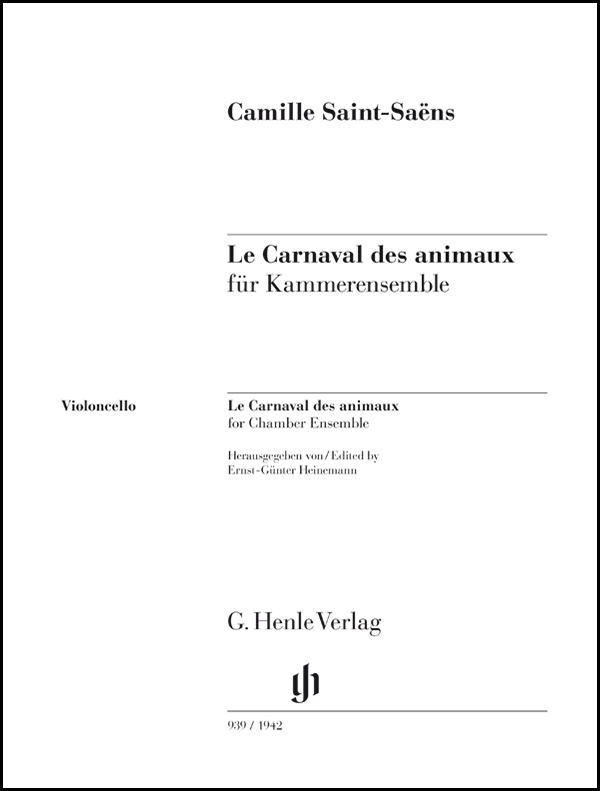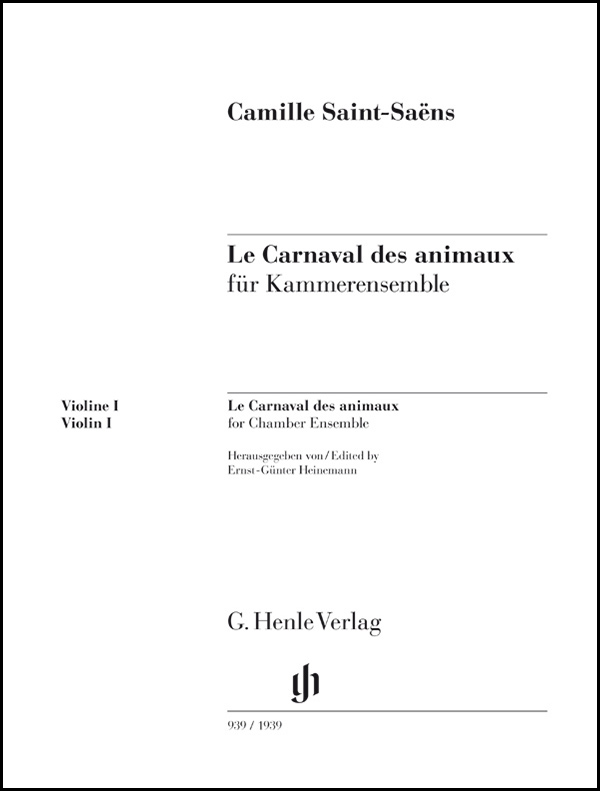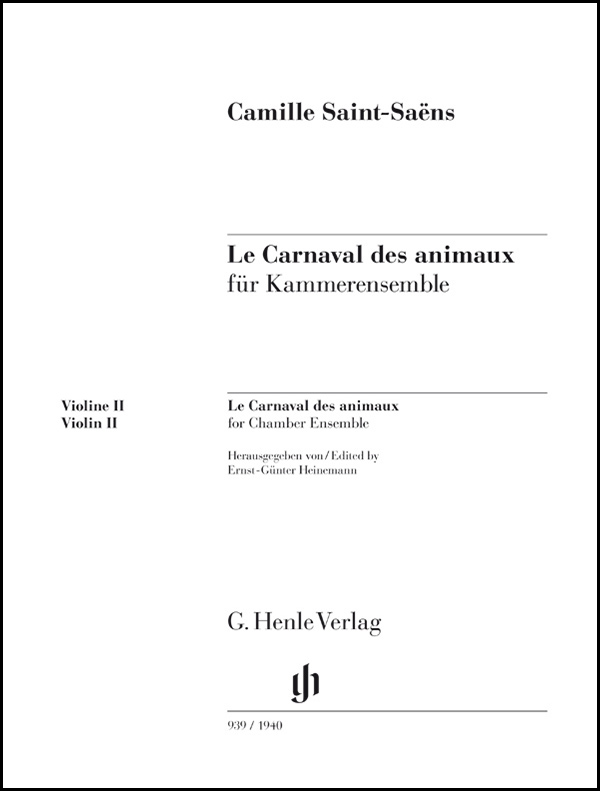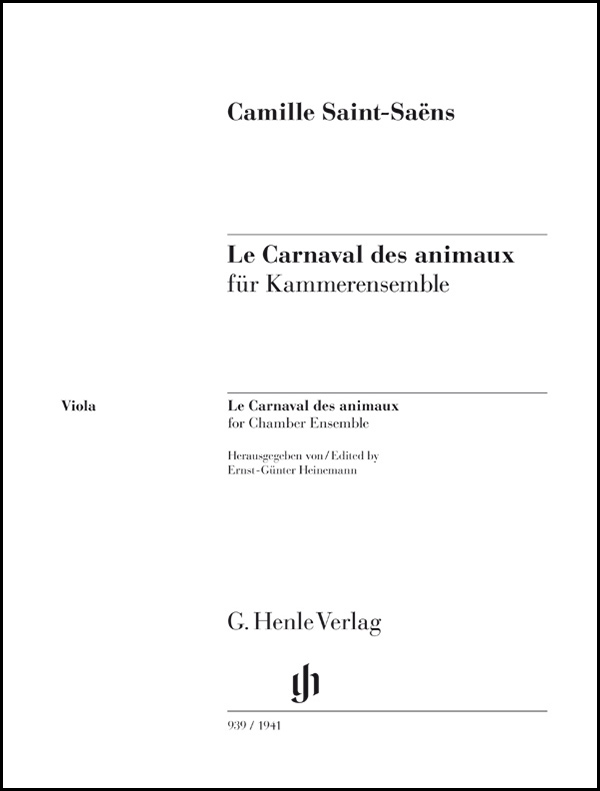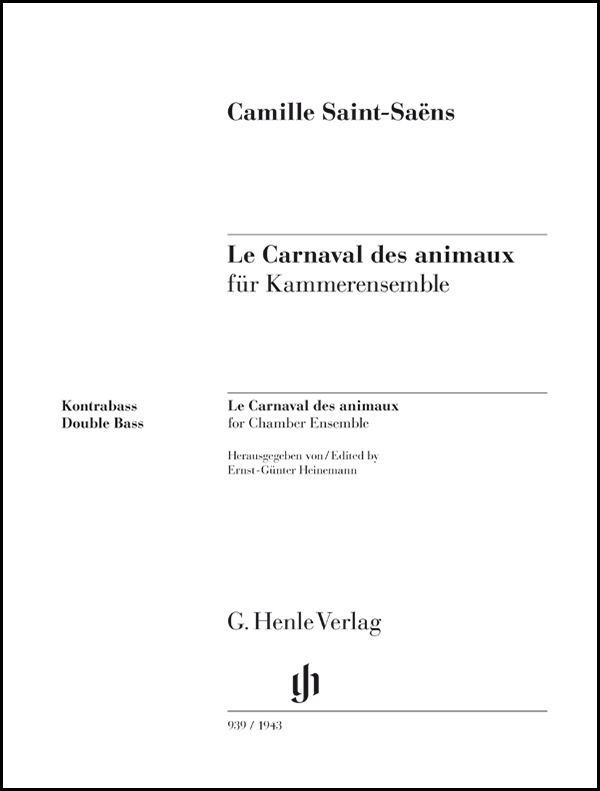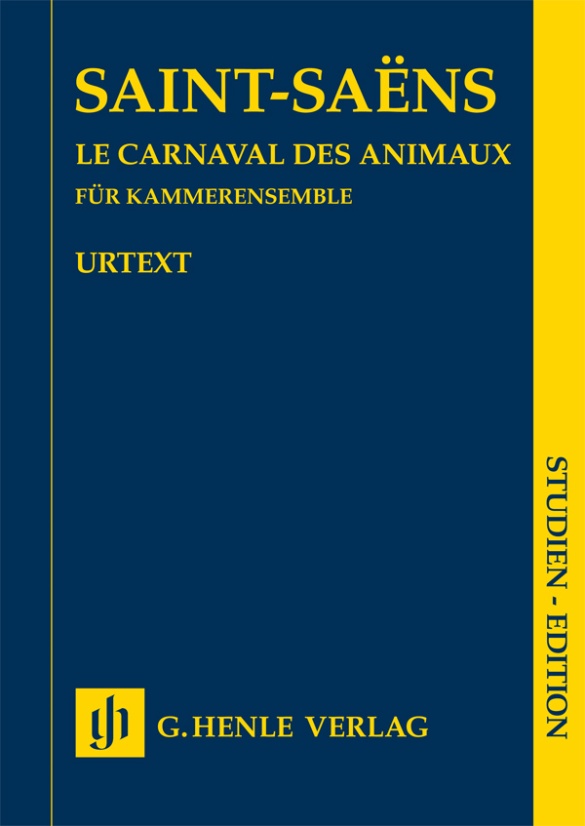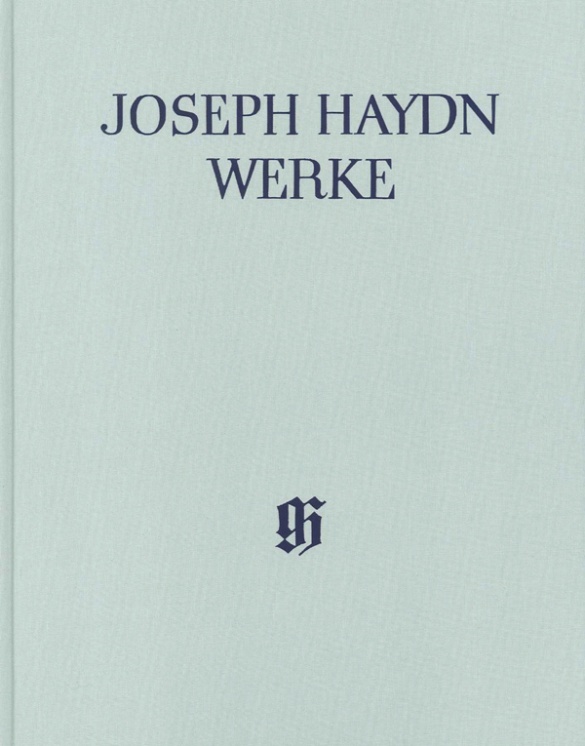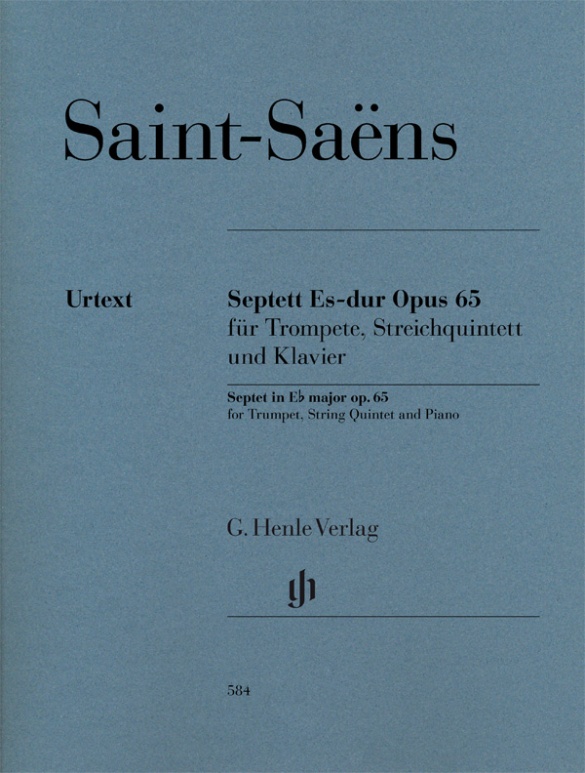

Camille Saint-Saëns
Septet E flat major op. 65 for Trumpet, Violin I, Violin II, Viola, Violoncello, Double Bass and Piano
The septet was composed in 1879/80, commissioned for the Parisian Chamber Music Society “La Trompette”. Saint-Saëns had, however, hesitated for several years to comply with the request by the founder, Émile Lemoine: “I could compose a concerto for you for 25 guitars, but for trumpet – impossible!” Not only is the instrumentation that Lemoine requested unusual – trumpet, string quintet and piano – but also its stylistic proximity to Baroque suites. The septet in four movements, which quickly became popular due to the catchy nature of the music, proved to be the forerunner of numerous works in a neo-baroque style and is now published for the first time in a critical edition.
Content/Details
About the Composer
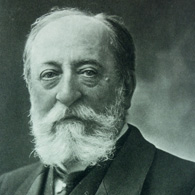
Camille Saint-Saëns
Saint-Saëns was one of the most multifaceted musicians of the second half of the nineteenth century in France. Regarded as a Classicist, he also wrote pieces with an Impressionist character to their sound, and one composition in quarter-tones. As a critic and essayist he was involved in the first complete editions of Rameau’s and Gluck’s works.
| 1835 | Born in Paris on October 9. Early comprehensive education. |
| 1848–52 | Studies at the Conservatoire de Paris. |
| 1853 | Organist at St. Merry Church in Paris. |
| 1853–59 | First large-scale works: Symphony No. 1, Op. 2 (1853), and No. 2, Op. 55 (1859); Piano Concerto No. 1, Op. 17 (1858); Violin Concerto No. 1, Op. 20 (1859); Mass, Op. 4 (1856); he attempts to arrive at unique forms. |
| 1857–77 | Organist at La Madeleine in Paris. |
| 1861–65 | He teaches at the École de Musique Classique et Religieuse Niedermeyer. |
| 1871 | Founding of the Société Nationale de musique. |
| 1871–77 | Composition of symphonic poems “Le rouet d’Omphale” (“The Wheel of Omphale,” 1871), “Phaéton” (1873), “Danse macabre” (1874), “La jeunesse d’Hercule” (1877). |
| 1876 | Attends the performance of the Ring in Bayreuth. |
| 1877 | Performance in Weimar of his opera “Samson et Dalila.” |
| 1881 | Member of the Académie des Beaux-Arts. |
| 1883 | Performance in Paris of his opera “Henry VIII.” |
| 1885 | Publication of the treatise “Harmonie et mélodie.” |
| 1886 | Performance in London of his Organ Symphony (Symphony No. 3 in C minor): major work with thematic transformation after Liszt’s model. Composition of “The Carnival of the Animals,” the publication of which he forbade during his lifetime. |
| 1899 | Publication of the book “Portraits et souvenirs.” |
| 1900 | Cantata “Le feu celeste” in praise of electricity, for the opening of the Exposition Universelle. |
| 1921 | Death in Algiers on December 16. |
About the Authors

Peter Jost (Editor)
Dr. Peter Jost, born in 1960 in Diefflen/Saar, read musicology, German and comparative studies at Saarland University in Saarbrücken. He did his PhD in 1988 with a thesis on Robert Schumann’s Waldszenen.
From November 1991 to April 2009 he was a research associate at the Richard Wagner Complete Edition in Munich, and since May 2009 has been an editor at G. Henle Publishers. His Urtext editions comprise predominantly French music of the 19th and 20th centuries, including works by Lalo, Saint-Saëns and Ravel.

Klaus Schilde (Fingering)
Prof. Klaus Schilde, born in 1926, spent his childhood in Dresden. There he was greatly influenced by Walter Engel, who taught him the piano (Kodaly method), composition and violin. From 1946–1948 he studied at the music conservatory in Leipzig with Hugo Steurer. After moving to the west in 1952 he studied with Walter Gieseking and Edwin Fischer, as well as with Marguerite Long, Lucette Descaves and Nadia Boulanger in Paris.
Schilde won numerous prizes. From 1947 onwards he gave concerts as a soloist and chamber musician on almost every single continent with renowned orchestras. He taught at the music conservatories in East Berlin Detmold, West Berlin, Munich, Tokyo (Geidai) and Weimar. From 1988–1991 he was President of the Staatliche Hochschule für Musik und Theater in Munich, where he also taught for decades as a professor. There are numerous radio and television broadcasts with Klaus Schilde as well as CD recordings. Schilde has contributed fingerings to almost 100 Henle Urtext editions.
Prof. Klaus Schilde passed away on 10 December, 2020.
Product Safety Informations (GPSR)

G. Henle Verlag
Here you can find the information about the manufacturer of the product.G. Henle Verlag e.K.
Forstenrieder Allee 122
81476 München
Germany
info@henle.de
www.henle.com
Edited by Peter Jost, this Henle Urtext edition is yet another outstanding presentation. It is thoroughly researched, with insightful comments relating to the autograph score which is held in the National Library in Paris.
AUSTA Stringendo, 2016Easy, accessible string and trumpet parts combine with a more challenging virtuoso piano score in this handsome, spacious Henle publication. Editor Peter Jost's scholarly preface is engaging and enlightening.
Strings Magazine, 2016Saint-Saëns himself also made a piano trio version, and later authorised an augmentation of the original quartet parts for a small-orchestra effect. Henle's pristine version of the original is a welcome return from this arrangement merry-go-round, and the piece itself not impossibly difficult for the well-equipped school, a separate trumpet part being considerately provided in B flat as well as Saint-Saëns' original E flat.
Music Teacher Magazine, 2016Das Werk ist voller Spielfreude, probieren Sie es aus! Die Ausgabe ist auf gewohnt höchstem Niveau, neben der Klavierpartitur liegen 7 Einzelstimmen bei: Tromp in Es, in B, 2 Vl, Vla, Vc und Kb.
ESTA-Nachrichten, 2016Die Ausgabe aus dem Henle Verlag ist wie immer vorbildlich mit einem Vorwort zur Geschichte des Werks sowie einem kritischen Bericht zur Urtextausgabe versehen. Dieses Septett ist ein Stück mit Augenzwinkern, das es verdienen würde, häufiger aufgeführt zu werden.
Sonic, 2020recommendations
autogenerated_cross_selling
Further editions of this title


